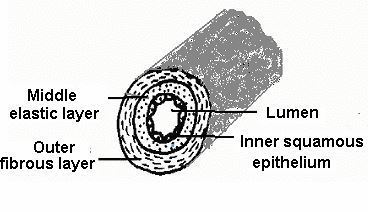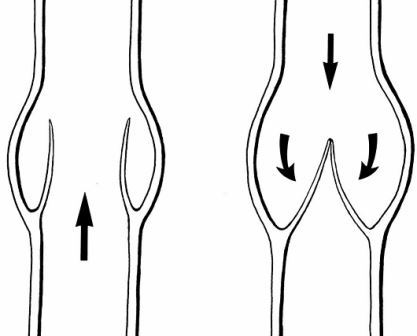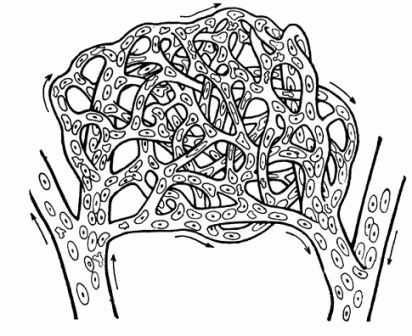a) Arteries

An artery is a blood vessel that carries blood from the heart to the rest of the body. Arteries have thick walls to withstand the high pressure at which the heart pumps the blood. Pushed under pressure, blood cannot flow backwards.
Function:
Arteries carry oxygenated blood from the heart to all parts of the body. An exception case is for the pulmonary artery which carries deoxygenated blood from the heart to the lungs for purification (to receive oxygen).
b) Veins

They carry blood towards the heart and they have thin elastic walls. They have valves to prevent blood from flowing backwards into the heart. They are found near the body surface.
Valve A shows a vein with open valve to allow blood to pass through it while valve B shows a vein with closed valve to prevent blood from flowing backwards.
Functions:
All except pulmonary vein carry deoxygenated blood from the lungs to the heart
c) Capillaries

These are the smallest blood vessels whose walls have tiny holes (pores). They are narrow and thin and form network in every organ and tissue in the body. They are link between veins and arteries.
Functions:
Capillaries thin walls let food and oxygen leave blood and enter the tissues. This way waste material leaves the tissues and enters the blood to be transported to the excretory organs.
Mutiso answered the question on
October 6, 2018 at 18:13